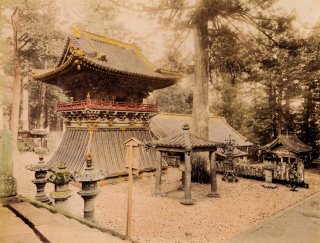
Nikko, the Gem North of Tokyo
"Nikko well deserves to be one of the most popular day trips from Tokyo, but to beat the crowds, consider turning it into a three day trip; spend a night, see Nikko in the early morning, then push on into the interior of Nikko National Park,to a region of wild mountains and onsen lodges." --June Kinoshita & Nicholas Palevsky, Gateway to Japan
"Nikko, 2 hrs. by rail from Tokyo, is both a gem of natural beauty and home to one of the must-sees of Japanese architecture. Toshogu Shrine which houses the mausoleum of the founderof the Tokugawa shogunate, is Nikko`s most famous attraction. The complex is unusual among Japanese architectural gems for its display of opulence and decorative complexity."--JNTO, Japan National Tourist Organization, Your Guide to Japan
Nikko
How to Get There?
(2hrs from Tobu-Asakusa Station via and express train on the Tobu-Nikko Line. Or you can take aTohoku Shinkansen (bullet train) from Tokyo or Ueno Station to Utsunomiya Station 45-50 min., then change to the JR Nikko line for the last part of the journey, which takes 45 minutes)
I have been to Nikko many times now and the temples and the detail on them always amazes me. It really is one of the must see places in Japan.
What to see?
Shinkyo Bridge
Is about 1 km from Tobu-Nikko Station or Nikko Station. Built in 1636. There is a legend about the bridge in which two enormous serpents carried Shodo Shonin across it.
Rinno-ji (Founded 1,200 Years ago!)
In this Tendai temple, is housed three gilt images of Amida Nyorai, a thousand armed Kannon, and a Kannon with a horse`s head. This is Buddhist exhibition of the three gods of Futara. Inside the Homotsuden are many treasures worth seeing.
ikko Tosho-gu
A huge gate greets you as you enter this Shinto shrine. On the left you will see a five story pagoda that was originally built in 1650 but had to be reconstructed in 1818. (Typical of so many of Japan`s wooden buildings, destroyed by fire, floods, earthquakes, and typhoons). The Omote Gate is protected by DevaKings. Go straight and you will see the Three Sacred Storehouses. On the second floor of the last storehouse you can see carvings of elephants by a carver who had never seen one. In the Shinkyusha (to the left) you will see a carved white horse. Inside the stable you can see the life cycle of the monkey; "the hear no evil,see no evil, speak no evil," which has come to epitomize Nikko. In the sacred library are 7,000 Buddhist scrolls and books. Unfortunately, it isn`t open to the public.
As you go through another gate you will see a drum tower and a belfry. On the left of the tower is the Honji-do which has a large ceiling painting of a dragon in flight. A monk may bang two wooden sticks togetherto show you the strange echo of this hall. It is supposed to sound like the roar of a dragon.
Yomei Gate is atypical of Japanese architecture with its preponderance of detail, which includes: animals, real and mythological, as well as gold leaf and red laquer. It is truly beautiful so be sure to bring your camera! Detail is everywhere with depictions of Chinese sages, dancing women and flowers to name a few. Somehave suggested the shrine is more Chinese than Japanese. Others have worried that the perfection was too much and might enrage the Gods. To prevent this, one pillar was deliberately built upside down. See if you can find it.
On the right of Yomei Gate is the sleepy cat, which is famous in Japan for its realistic appearance. Go through Sakashita Gate and follow the path through the trees to Ieyasu`s tomb. Ieyasu is famous for uniting Japan.
Furarasan-Shrine (Jinja) Founded in 782 Is basicly a smaller version of Toshu-gu but well worth seeing as well. The demon lantern or (bake-torii) still has the sword markings left by a samurai.
aiyuin-byo
Is a mausoleum dedicated to Ieyasu`s grandson who was the powerful third shogun Iemitsu.This was built in 1653. It is as beautiful as Toshu-gu but in a more picturesque setting in a lush forest. Well worth a visit! "While the Toshu-gu is dazzling and overpowering, the Taiyuin-byo is considered morebalanced and esthetically superior. The ornately carved Nio Gate marks the entrance. To the left are sacred storehouses similar to those at Tosho-gu."--June Kinoshita & Nicholas Palevsky, Gateway to Japan
Kegon Falls -- one of Nikko`s most famous attractions
Take the elevator that actually goes down through the cliff to a spectacular observation deck. You can also view Futara-san Shrine on the lakeshore.
 Some vintage pictures of Nikko
Some vintage pictures of Nikko